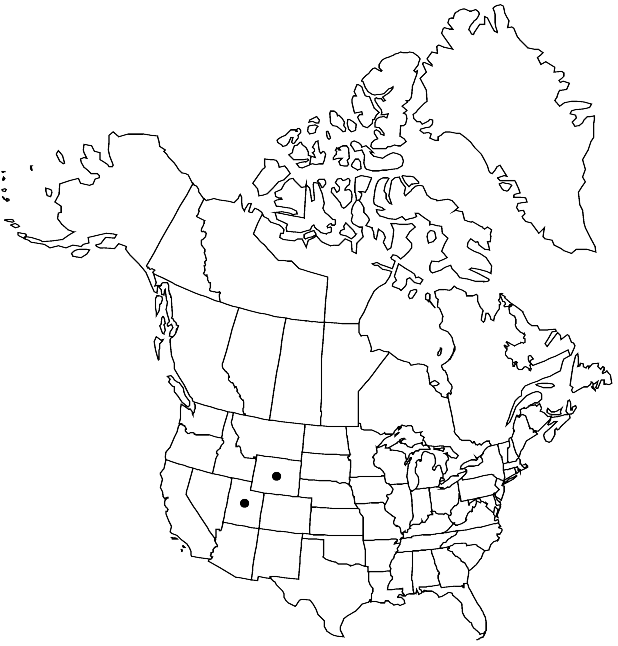Physaria nelsonii
Novon 12: 326. 2002.
Perennials; (diminutive); caudex branched, (densely cespitose, mound-forming); densely pubescent, trichomes (flaring, giving a shaggy appearance), usually 4–5-rayed, rays furcate or bifurcate, (strongly tuberculate throughout). Stems few to several from base, erect, (from basal tuft), 0.1–0.2 (–0.3) dm, (not or just barely exceeding leaves). Basal leaves: blade spatulate to oblanceolate, 0.5–1.5 cm, (base gradually narrowed to petiole), margins entire. Cauline leaves (absent or few); similar to basal, blade linear. Racemes dense, (few-flowered). Fruiting pedicels (loosely sigmoid), 3–5 mm. Flowers: sepals (pale-yellow), oblong to elliptic, 4–5 mm, (median pair usually thickened apically, cucullate); petals (bright-yellow), lingulate, 6–8 mm. Fruits lanceolate, compressed apically, 2.5–3 (–4) mm; valves pubescent, trichomes spreading, (appearing fuzzy), rarely with trichomes inside; ovules 4–8 per ovary; style 2.5–4 mm. Seeds plump, (oblong).
Phenology: Flowering May-mid Jun.
Habitat: Limestone, windswept knolls and cliffs, nearly barren areas with other cushion-forming plants
Elevation: 1600-2300 m
Discussion
Physaria nelsonii is morphologically similar to 73. P. pycnantha, which traditionally was included in a broader P. nelsonii. These allopatric species are distinguished by styles equal to or exceeding the length of fruit and fruiting stems overtopped by basal leaves (P. nelsonii) versus styles shorter than fruits and fruiting stems usually exserted beyond basal leaves (P. pycnantha).
Selected References
None.
Lower Taxa
"not" is not a number. "elongated" is not a number."thick" is not a number."dm" is not declared as a valid unit of measurement for this property."dm" is not declared as a valid unit of measurement for this property.
